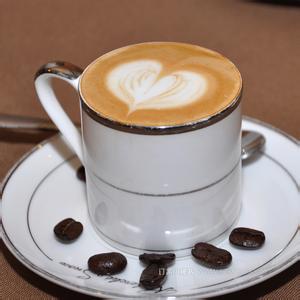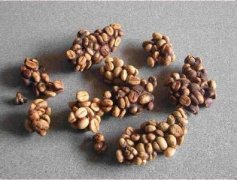Coffee growing area
Since the introduction of coffee into Asia, it has shown its thick and steady side. Asian coffee beans are dense, thick, sweet and round, and their aroma and sour taste are conservative in comparison. However, the unrestrained feeling is not the strength of Asian beans. Asian beans emphasize the taste as large and thick as the bottom of the pyramid; it is that the coffee feels the rich aroma before it is tasted.
From the point of view of appearance, Asian beans are mostly washed and semi-washed, so the particle size of raw beans is also very uniform, and some raw beans treated by semi-washing are darker in color than those treated by other treatments. in fact, high-quality Asian beans can also show a high level of aroma and soft fruit acidity under light baking.
It is generally known that selected coffee is produced in Indonesia, Yemen, India, Vietnam, Papua New Guinea and other countries in Asia. in fact, coffee was grown on the land of the Chinese nation more than 100 years ago, but the tea culture is so deep-rooted that we can only sigh: both raw tea and he Sheng coffee. Before we talk about coffee from Asian countries, let's take a look at the coffee grown on our own land.

Taiwan (China Taiwan):
As a matter of fact, the cultivation of coffee in Taiwan has a long history. Both the British and the Japanese once planted coffee trees in Taiwan. By 1942, the area of coffee on the island had reached more than 1000 hectares, the largest period. Later, the Pacific War broke out. Agriculture is mainly food cultivation, and coffee plantations are mostly converted. By 1953, there were only 4.9hectares left. After that, it declined because of many political and economic factors, and it was not until recently that some people began to reinvest in it because of the coffee boom.
Hebao Mountain in Yunlin Gukeng, Huisun Forest Farm in Nantou, and Dongshan Township in Tainan County are several famous coffee producing areas in Taiwan Province, and most of them are planted in Arabica. Taiwan coffee is moderate in texture, low in acidity and with a hint of herbal flavor, similar to the synthesis of South American and Indonesian beans. At present, the output of coffee in Taiwan is not high, but because of the popularity of coffee fever in Taiwan, many people want to have a kiss, so the price remains high, even impersonating imports.
Let's take a look at the rest of Asia.
Indonesia (Indonesia):
Famous representative coffee: Java (Java), Sumatra Manning (Sumatra Mandheling)
Indonesia produces coffee beans mainly in Java, Sumatra, Sulawesi and other three islands, all of which belong to volcanic topography.
It is generally believed that Indonesian coffee beans have a strong aroma and low acidity, with a slight taste of traditional Chinese medicine and soil. Mandheling, produced in the mountains of Sumatra, is world-famous and rich in texture. Top Mantenin, light baked taste is very clean, sour and sweet taste are very rich; deep baking will have a very deep texture and strong taste.
Robusta beans from Java have a unique smell and are often used as a recipe for espresso because they are rich in oil. The coffee produced by Sulawesi is rated as having a special herbal flavor, deep and clean.
In particular, there is a special animal called the civet in the mountains of Indonesia. Because it makes Indonesia produce almost the most expensive coffee in the world-civet coffee (Kopi Luwak), Kopi (Indonesian, coffee), Luwak is a common name for civet in Indonesia. This kind of cat likes to eat coffee berries, and hard coffee beans are eventually excreted because they are indigestible. During the period of passing through the digestive tract, coffee beans are fermented to produce a unique and complex flavor, which makes many gluttons like this kind of coffee with special aroma. But because the output is very small, the price is extremely high, costing as high as hundreds of dollars per pound.
India (India)
Famous representative coffee: monsoon Malaba (Monsooned Malabar)
The taste of Indian coffee is very mild, very low in intensity and acidity, with some spice and, of course, the common local flavor of Asian beans. India is usually used to blend into Espresso recipes. In fact, Indian beans taste like Sulawesi beans or Sumatra beans, but not that thick. Indian coffee does not sell well in the international market, and the main markets are in India. Indian beans treated in the sun are called Cherry, Arabica beans washed in water are called Plantation Arabica, and Robusta in water are called Parchment Robusta. In addition, rainy beans and aged beans increase the consistency of coffee and dark chocolate-flavored aged beans.
Indian coffee is grown mainly in the areas from the Western Gaozhi Mountains in southern India to the Arabian Sea, with coffee sold under the names of Maiso and Malaba. Monsoon Malaba is a unique kind of coffee in India. Because of the coffee beans exported from the coast of Malaba to Europe at that time, the appearance and taste of the raw beans were changed after being hit by the sea breeze for a long time. And become a taste that Europeans are accustomed to and like. This later became a special method of handling coffee beans, which were especially placed in the wet monsoon for a few months after harvest, so that they turned yellow and white and reduced acidity, that is, the monsoon Monsooned Malabar we bought.
Vietnam (Vietnam):
Vietnam is also one of the top coffee producers in the world. At present, the vast majority of coffee trees in Vietnam are Robusta, because the Arabica coffee trees in Vietnam were destroyed by leaf rust in the mid-19th century and replaced with Robusta coffee trees that are resistant to leaf rust.
Robusta coffee beans have a unique aroma and bitter taste, and their caffeine content is higher than that of Arabica. Because of the high extraction ratio, it is often used to make instant coffee, canned coffee, or mixed with three-in-one coffee and so on.
In recent years, India has also begun to plant coffee trees in Arabica, more committed to the cause of coffee production, but there has been no development in the boutique coffee market. The Vietnamese coffee we often hear in our conversation sometimes refers to the cooking of ice droplets, which is different from the kinds of coffee beans mentioned here, so don't be confused.
Yemeni region (Yemen):
Well-known representative coffee
Moka (Mocha)
Yemen is the first country in the world to grow coffee on a large scale. Its production is concentrated on the east coast of the Red Sea, across the sea from Ethiopia, where it originated. Ancient Yemeni coffee is exported from the port of Mocha, so it is collectively known as "mocha coffee" and is famous to this day. Some people call Ethiopia's "Harrar" and "Djimmah" as "mocha coffee", which can be said to be under their name.
Due to the dry climate, the Yemeni mocha all use the sun method, with a high mellow taste and wild sour taste, as strong as wine, is quite delicious coffee. Up to now, Yemeni coffee is mostly cultivated in primitive methods, and many small farmers grow it in their own gardens; despite its poor appearance, it retains the primitive and wild nature of coffee beans.
Yemeni coffee is better known as "Mattari" and "Sanani", and it is even more precious if you meet "Premium Mocha Extra". Generally speaking, Matali has a thick texture, chocolate-like tonality and wild acidity, while Sanani has a balanced taste and good aroma, both of which are VIPs in the selection coffee market.
Papua New Guinea (Papua New Guinea):
Papua New Guinea is a relatively new coffee producing area, and its Arabica beans are descended from Blue Mountain Coffee. However, the tropical climate of Southeast Asia makes it special sweet enough to enter the ranks of selected coffee.
The good coffee in Papua New Guinea is produced by farms, which use a special washing method, using local natural and pure water to wash off the flesh, and change clean water every day to prevent postpartum odor during the fermentation stage; finally, the coffee beans are dried in the sun to keep the coffee mellow and naturally fruity.
Important Notice :
前街咖啡 FrontStreet Coffee has moved to new addredd:
FrontStreet Coffee Address: 315,Donghua East Road,GuangZhou
Tel:020 38364473
- Prev

The best coffee in Bali
When you buy in Bali, the first thing worth mentioning is the coffee of Bali.
- Next

Coffee schedule for white-collar workers
Every day, white-collar workers are busy with work, rest and consumption, and their lives are extraordinarily full and busy. But they also know how to live and how to refresh, relax and relieve stress by enjoying different coffees at any time and in any mood. According to their daily schedule, they choose what time to drink and what kind of coffee they should drink in what mood.
Related
- Beginners will see the "Coffee pull flower" guide!
- What is the difference between ice blog purified milk and ordinary milk coffee?
- Why is the Philippines the largest producer of crops in Liberia?
- For coffee extraction, should the fine powder be retained?
- How does extracted espresso fill pressed powder? How much strength does it take to press the powder?
- How to make jasmine cold extract coffee? Is the jasmine + latte good?
- Will this little toy really make the coffee taste better? How does Lily Drip affect coffee extraction?
- Will the action of slapping the filter cup also affect coffee extraction?
- What's the difference between powder-to-water ratio and powder-to-liquid ratio?
- What is the Ethiopian local species? What does it have to do with Heirloom native species?

